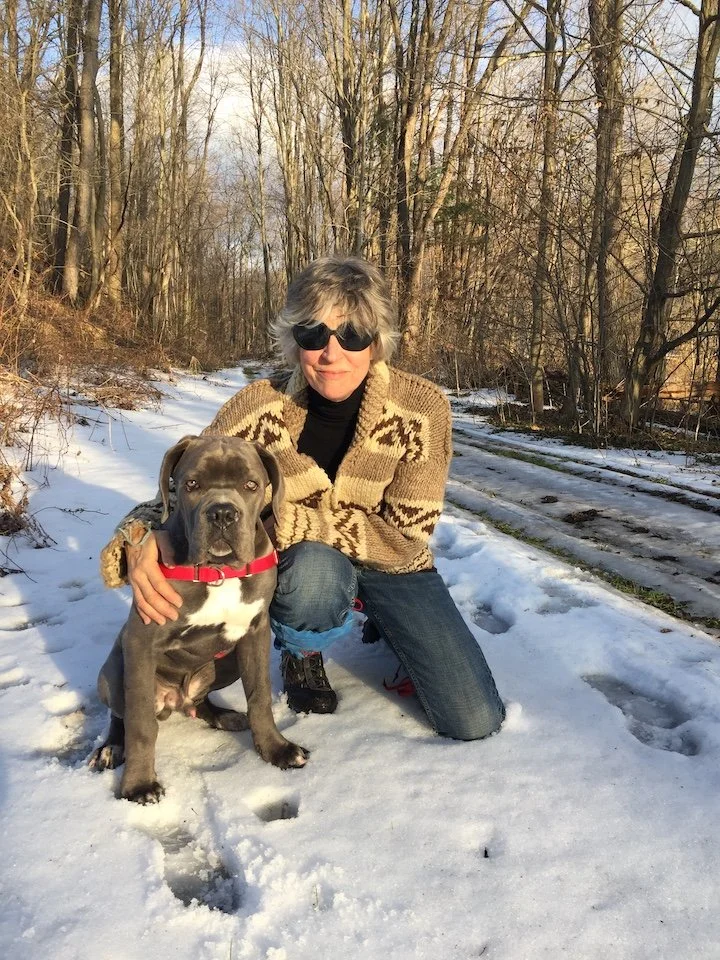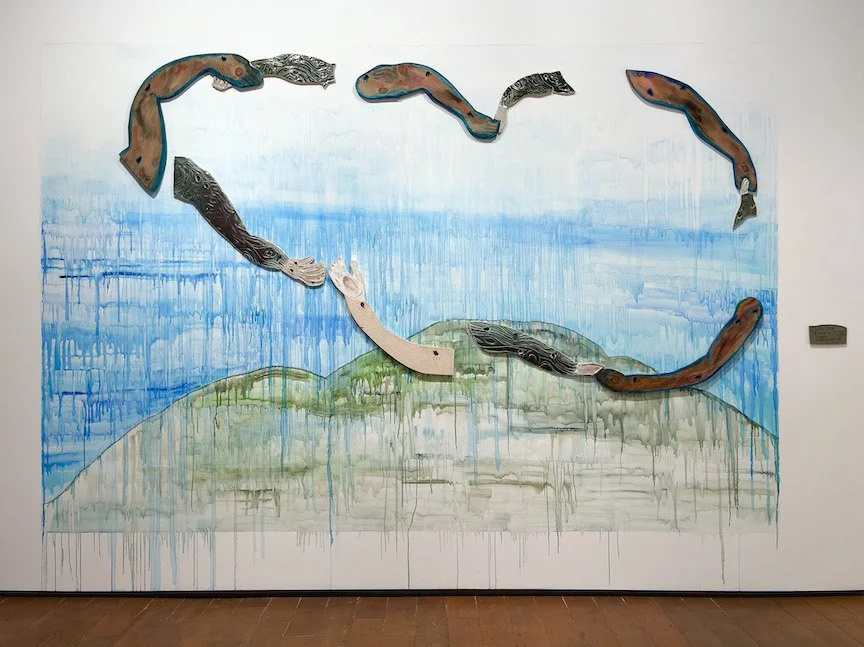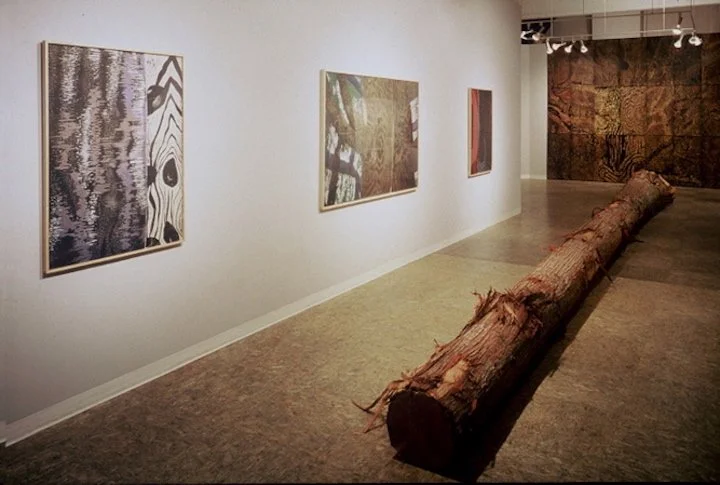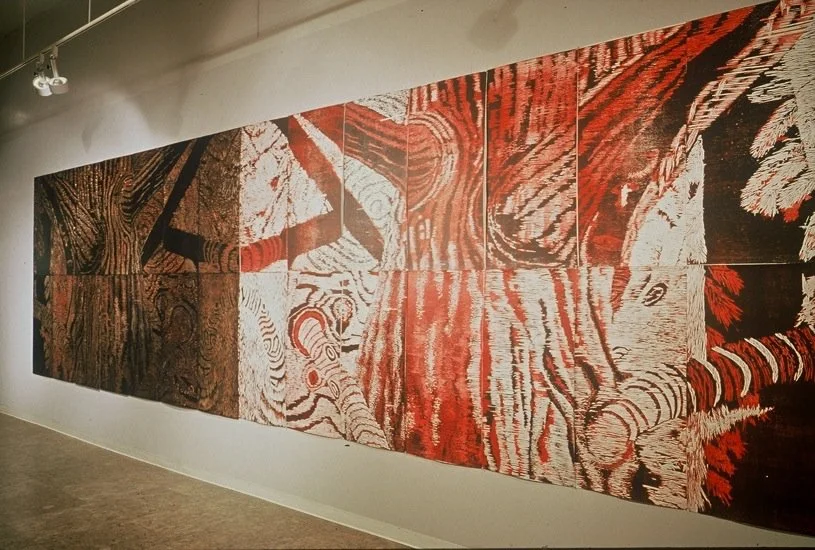A Telling Conversation with Jody Isaacson
Jody Isaacson, Courtesy of Gib Jenkins
Jody Isaacson is an American educator, visual artist, and executor of the David Byrd Estate, based in upstate New York. She has been an instructor at the Montgomery College of Art and Design, Rockville, Maryland, the Lord Fairfax Community College in Middletown, Virginia, the University of Maryland, and the Cornish College of the Arts in Seattle, Washington. Her work has been exhibited at the Greg Kucera Gallery, Seattle; the Hyde Collection, Glen Falls, New York; the Seattle Art Museum; the New Mexico Museum of Art, Santa Fe; the Albuquerque Art Museum; The Print Club, Philadelphia; and the Nevada Museum of Art, Reno.
Jody has received awards and grants from the Maryland State Arts Council; DC Commission on the Arts and Humanities; The Print Club, Philadelphia; Art Matters Inc; and the NEA/Westaf Visual Arts Fellowship. She has been awarded residencies at the Ceramic Residency Township 10, Marshall, North Carolina; Print Residency, Art Union of Hungarian Etchers and Lithographers, Budapest, Hungary; Print Residency, Centrum, Port Townshend, WA; and Painting Residency, Ucross Foundation in Clearmont, Wyoming. Her art is in public collections, including the Microsoft Corporation, the Federal Reserve Bank of San Francisco, the Coca-Cola Company, and the Amerada/Hess Corporation.
I had the pleasure of asking Jody about her most recent exhibit, Absence of Presence, at the Greg Kucera Gallery, the difference between an artist being a storyteller and a writer, and her favorite thing to create and why.
Dance, after Matisse, watercolor, porcelain, wood, silver leaf, ash, 101.75 x 153.5 inches, Greg Kucera Gallery, 2021, courtesy of Greg Kucera Gallery and the artist
UZOMAH: After recently completing two residences, what are some of the benefits of going to them, and what do they offer artistically that traditionally a daily studio cannot?
JODY: When I can leave family, home, responsibilities, and established patterns to arrive in a new landscape and studio, I have no expectations other than to concentrate on my work. Throughout my career, residencies have given me opportunities to detach from the quotidian and open myself to exploration and discovery. There, the work of listening, observing, and making is my sole purpose. A residency is a true blessing.
U: Is there any difference in the artist’s role as a storyteller versus a writer? What are some similarities?
J: Artists are storytellers—through stories, human beings speak to themselves and others to make their worlds coherent. Through their different mediums, both writers and visual artists tell stories. When I am working, I am trying to make objects that manifest a particular experience, and when I look at these pieces, my awareness of the more-complex story within each body of work increases.
Writers as well have a set of ideas and experiences about which they write—they don’t write about everything! It seems to me that writers have a more direct route to convey this understanding to their readers, perhaps because readers must spend so much time with the written word. Visual art is not so completely a time-dependent medium.
Protection, Greg Kucera Gallery installation, 1996, courtesy of the artist
Protection, woodcut reduction prints and blocks, 168 x 96 inches, 1996, courtesy of the artist and Greg Kucera Gallery
U: Can you explain the artistic process and preparation required to prepare for your latest exhibit, Absence of Presence, at the Greg Kucera Gallery in Seattle?
J: For decades, my work has focused on place, loss, and memory. Two earlier bodies of work were instrumental in the conception and execution of the show now at Kucera.
The Protection series was a meditation on an old-growth Pacific Northwest Forest. Trees are its subject, and the woodblock print is the medium. I gouged, scraped, and sanded thirty-five 2’ x 4’ wooden blocks, then assembled them to create a thickly entangled forest.
Woodblock prints have a directness that can capture human emotion. The blocks themselves are the immediate result of the artist’s touch. Often, they are more compelling than the resulting prints, and I have included several in this show.
The Art of Losing was a two-year, systematic examination of loss and living, an accounting of those, now deceased, who have been important to me. I named 236 individuals and then dipped a candlewick for each—one dip for every year they lived. During this extended process, I brought my physically-engaged intention to their memories. I realize now that making The Art of Losing drove my memories of these people, so dear to me, into my very cells, and made me so aware that memory is never static, always fleeting, still only in the moment.
Protection and The Art of Losing prepared me to make the Absence of Presence—which deals with the death of my son in Puget Sound, eight miles from my childhood home. I return often to those waters and woods to seek solace and reconciliation with the overwhelming fact of this loss. My son had tattooed his right arm with one of my woodcuts from Protection. His arm floats in my mind, an image of beauty suspended in the waters of the Sound, and circles back through my work. Contemplating Matisse’s Dance at the Museum of Modern Art, I recognized that the circle of dancers’ arms expresses my continuing connection with my son—simultaneously holding on and letting go.
Looking at Absence of Presence now, I am realizing that this project begins with holding on, passes through letting go, and is moving toward just floating. Floating.
Los Nichos: The Art of Losing Isn’t Hard to Master, pine nichos with wax pendulums, 66 x 387 x 26 inches, installation at Greg Kucera Gallery, 2015, courtesy of the artist
U: What is your favorite thing to create with and why?
J: I don’t believe in favorites. I have a history in crafts—spinning, weaving, embroidering, candle making, wood carving, and printmaking—and ended up going to art school. My selection of medium always depends on the story I plan to tell, and this gives an improvisational aspect to my practice of making. That said, two years ago, during a residency at Elizabeth Nields’ ceramic studio, I was confronted with a slab roller, which I was very familiar with—it’s a printing press, in fact.
I like being a beginner in a new material—at this point, it is ceramics. The freedom of being a beginner without specific experience or rules can be a real pleasure of a residency.
David Byrd Home, Sidney Center, NY 2012, courtesy of the David Byrd Estate
U: Can you discuss your relationship with artist and veteran David Byrd, how it all came about with his gallery opening and what he taught you about art and life?
J: I met David Byrd on September 10th, 2012, and my relationship with him was one of the most gratifying of my life. He immediately reminded me of my beloved grandfather. Whenever I had driven by David’s house, the oddly arranged objects in the field in front of it intrigued me—a rusted steel cube, concrete debris, auto parts, wood scraps. Each time, I had looked for signs of life, but never saw anyone. On this day, I saw a slight, stooped man walking toward the house. I circled back to ask him if an artist was living there. He replied, “Well, I’m not sure about that, but you’re welcome to come in and tell me.”
David had arranged his living space not as a home, but as a studio and gallery in which every object was carefully placed. A dark stained pitcher sat on a high blue stool, behind which stood an old paint-peeled door; a variety of glass and ceramic bottles were positioned thoughtfully on shelves, in window ledges, on tables; and large, gesturing, crudely carved wooden figures contrasted with sticks purposefully placed in paper bags outside the front door. And the paintings! Everywhere. On every wall, stacked against every wall, were the paintings.
In 26 years of living alone, David had had little contact with people. He built his house by himself. He had never exhibited or sold any paintings. Every work of art he had ever made was inside the house. Before I left, he insisted I see his book—David’s magnum opus. Handmade, it is 180 pages, done in graphite and colored pencil, illustrating the major themes of his paintings. The drawings were not studies for his oil paintings—they were sketched from the paintings. The book contains profound passages describing the challenges and rewards of dealing with the patients at the Montrose, New York, V.A. hospital, where he worked for thirty years as a night orderly. More than anything, David wanted this book published. *
He also wanted something that had eluded him his entire life—validation that he was an artist and that the pictures he had made were part of the American art canon. I brought David’s work to the attention of Greg Kucera in November of 2012.
Recognizing the quality of David’s work, Greg immediately arranged for an April exhibition. Five days before David and I were to leave New York for the Seattle show, he was diagnosed with terminal lung cancer. Miraculously, we made it to the opening. Every part of this venture, from getting David to Seattle, through the show, and back to the V.A. hospital in Albany, was a monumental challenge. Even so, David thought—and surely the people who met him thought—it was worth every effort.
My time with David, however brief, changed my life. My most meaningful memories of our time together are of reading his book out loud, looking over his ten sketchbooks, and listening to him talk about his paintings and the act of painting. David once told me he tried to paint because it might serve him in his behavior to others. I’ve never forgotten that. With that bit of wisdom, he often served me out-of-date pecan pie from the Big M.
David Byrd Home, Sidney Center, NY 2012, courtesy of the David Byrd Estate
U: What is something you enjoy doing as much, if not more, than creating art?
J: That would probably be hiking.
Dance, after Matisse, (detail) watercolor, porcelain, wood, silver leaf, ash, Greg Kucera Gallery, 2021, courtesy of Greg Kucera Gallery and the artist
U: How do you present a sense of loss in your artwork, especially in your installation?
J: As an artist, I tell myself stories so that I can begin to understand the truths of my life. Once I make the work, I must trust that this honest effort can somehow resonate with the lives of others who don’t know this story, but as story-making creatures, bring stories of their own.
For more information about Jody’s work please visit her site. The David Byrd Estate is represented by Anton Kern Gallery, New York. Meet David Byrd.







